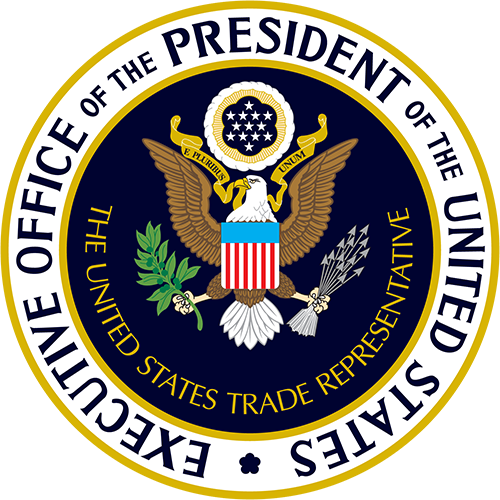By: Claire Blanton, Martha Esparza, Beth Baltzan
July marked the 80th anniversary of the Bretton Woods Conference. Over three weeks in 1944, more than forty countries came together to create the International Monetary Fund, the World Bank, and set the stage for the post-war economic order. In doing so, they fulfilled Franklin Roosevelt and Winston Churchill’s shared vision of a world that embodied freedom from want and freedom from fear – as expressed in the Atlantic Charter of 1941.
In honor of this milestone, USTR Counselor for Trade and Investment Beth Baltzan, Senior Policy Advisor for Inclusive Trade, Public Health and Strategy Dr. Martha Esparza, M.D., and Special Assistant Claire Blanton hit the road in July not only to visit Bretton Woods, New Hampshire but also to connect with local communities on trade and social issues specific to the northeast region, collaborate with small and medium-sized business owners on the importance of a worker-centered trade policy, and seek out community resources for economic opportunity.
We first arrived in Newport, Rhode Island to meet with staff and faculty from the IYRS School of Technology and Trades. First established in 1993, IYRS is a pillar in the Greater Newport community as a school that prides itself on teaching transferable skills and serving a student body of individuals from young people and veterans to individuals seeking a career change in trade. The IYRS faculty and staff showed us an in-depth tour of the campus. We met with students who shared what they had most recently learned in classes covering wood-working, machining, electronics, computer-aided design, and 3-D printing, all of which relate to contemporary shipbuilding. Some of the students have been drawn from shipbuilding manufacturers in the region, eager to learn new skills. IYRS also shared with us an innovative way to promote economic growth and stability within coastal communities and what collaboration looks like among their students.
(Left Picture): IYRS sign on the front of campus; (Right Picture); Boat built by IYRS students.
Next, we drove up to Portland, Maine to meet with Tae Chong. A community leader, Asian-American first-generation immigrant, and innovator, Tae shared with us the work that he’s done in Portland, Boston, and Lowell, Massachusetts to curb growth of the green crab population, an invasive species off harming the local lobster supply because it feeds off of the larvae. As an innovative problem-solver, Tae recognized that immigrant communities know how to cook this type of protein. He sees a pathway to link up supply and demand and understands the importance of targeted marketing – for example, he organized demonstrations by Cambodian grandmothers how to make it as a way of making it more popular in Asian communities. He successfully introduced communities to the protein and his work is continuing as he investigates how this idea can evolve. Tae shared the importance of inclusion, trust, collaboration and economic growth within communities, especially within immigrant communities like his own that have been previously left out of these types of conversations.
Picture of small business Coffee By Design’s key community goals.
Next, we met with small and medium-sized business owners at the Maine International Trade Center. We heard from a variety of small businesses including owners of a textile manufacturer, a high-tech ocean engineering firm, and company creating tools to control tension and maintain integrity on material used for sensitive operations. Through our conversation with these SMEs, we heard their perspective on supply chain resiliency, their steps towards creating a worker-centered work environment from competitive wages to summer Fridays and the work that they each have done to create economic stability for themselves and their communities. We also had the opportunity to highlight the work that we’ve done with USTR’s supply chain initiative. Each small business owner shared ways that they were innovative, inclusive and open-minded in how they think about what it means to run a business.
Picture of Maine small business owners gathered at the Maine International Trade Center for a conversation with USTR Senior Advisor Beth Baltzan and White House Fellow Dr. Martha Esparza, M.D.
The last stop on the journey was Bretton Woods, New Hampshire, the site of the eponymous 1944 conference. The hotel that hosted the conference still stands and hosts anniversary events, including a seminar about the background of the conference and its legacy. We also had the opportunity to visit the “Gold Room” where the delegates, including John Maynard Keynes, gathered to begin the hard work of laying a foundation for more just economic future. As the seminar host stressed, Bretton Woods was about democracy itself, and inspires us to this day.
Picture of the hotel’s room numbers plaques where delegates from more than forty countries stayed at Bretton Woods during the Bretton Woods Conference.
###







